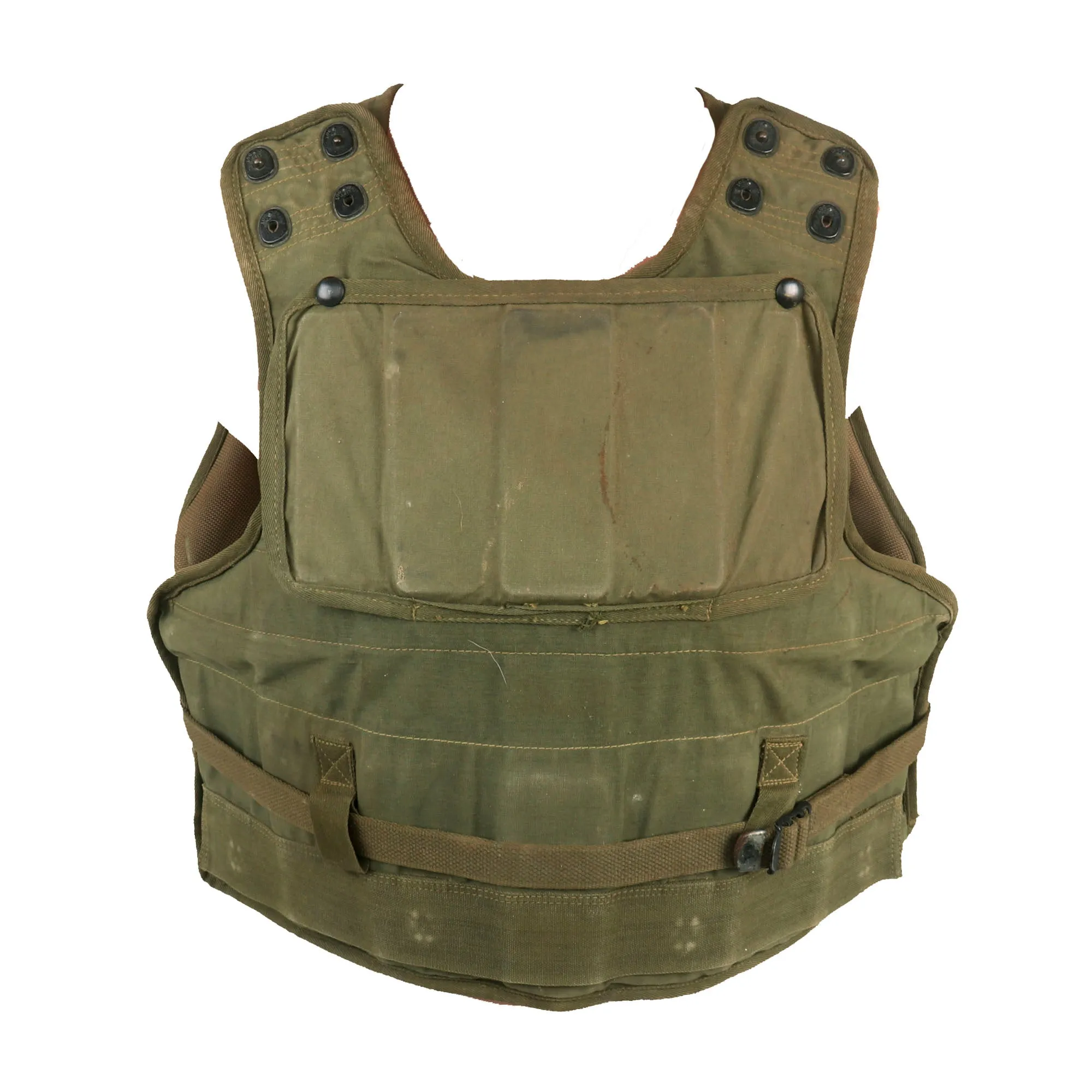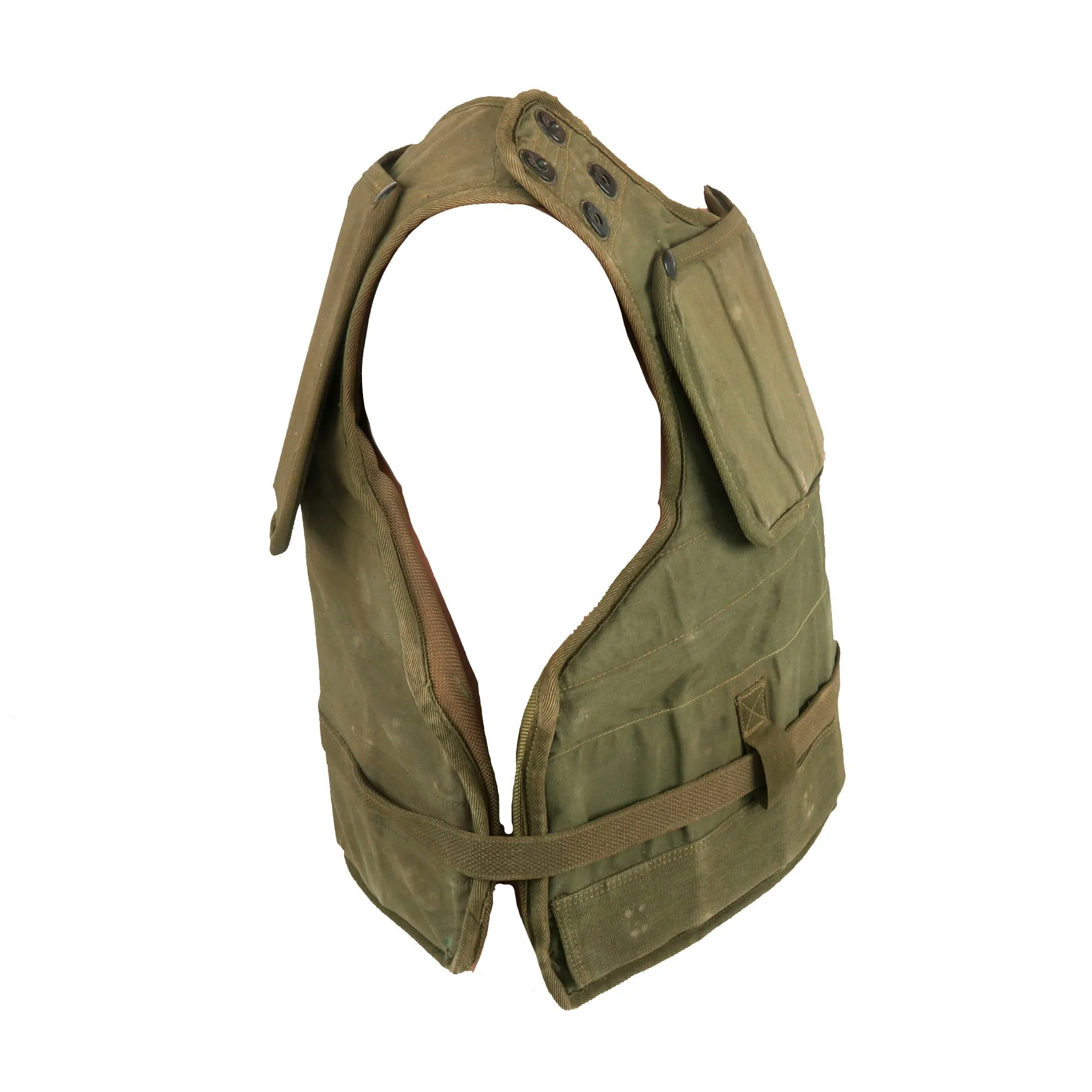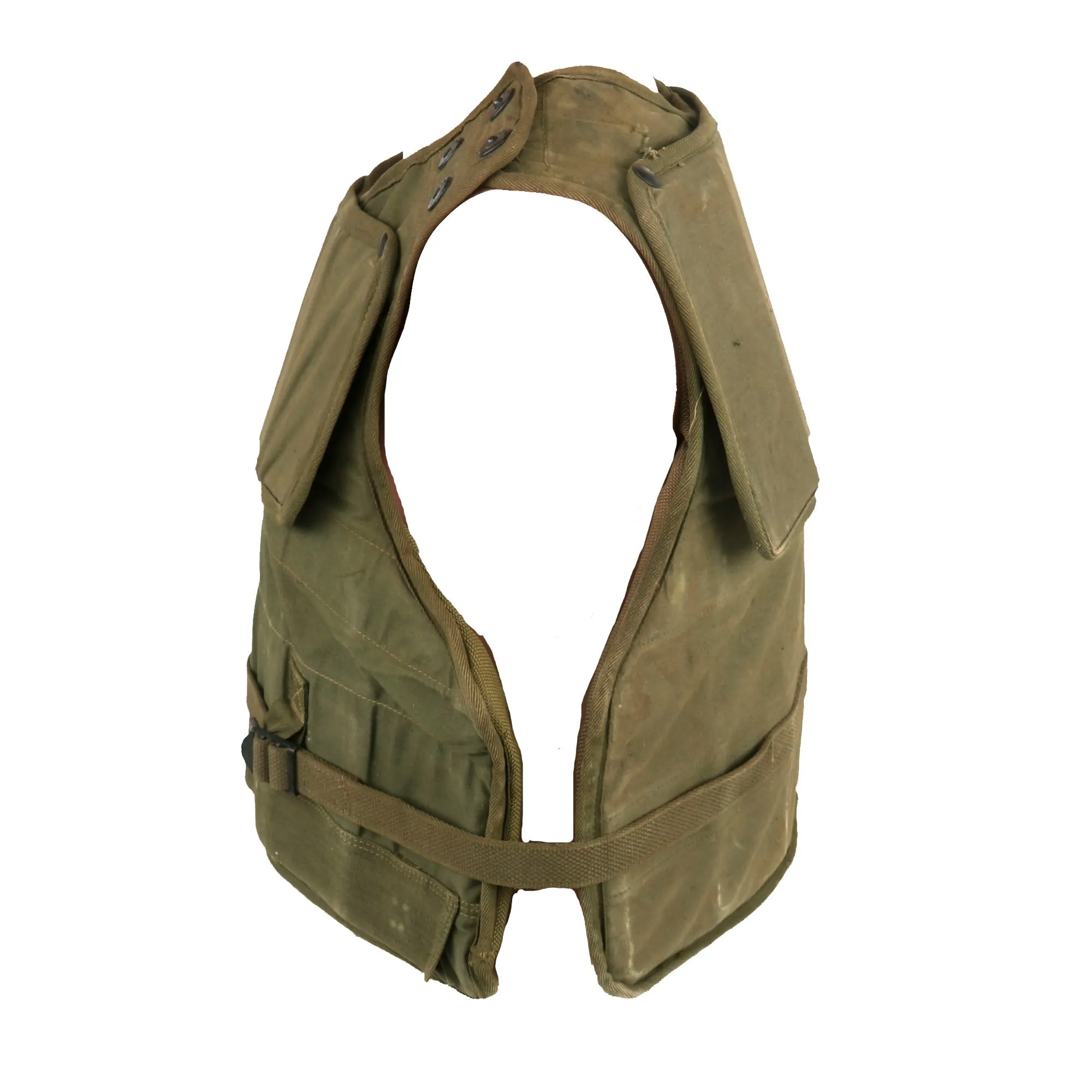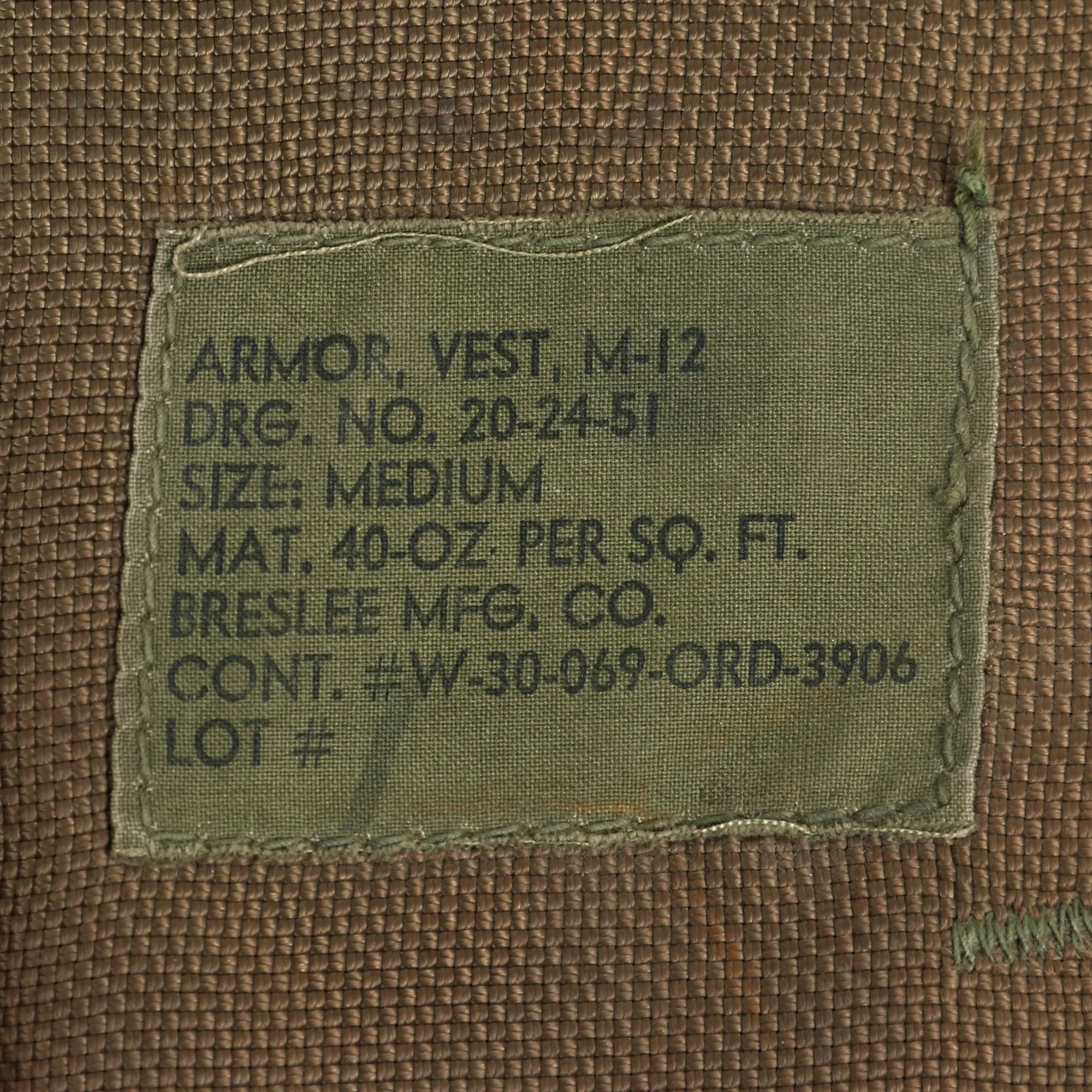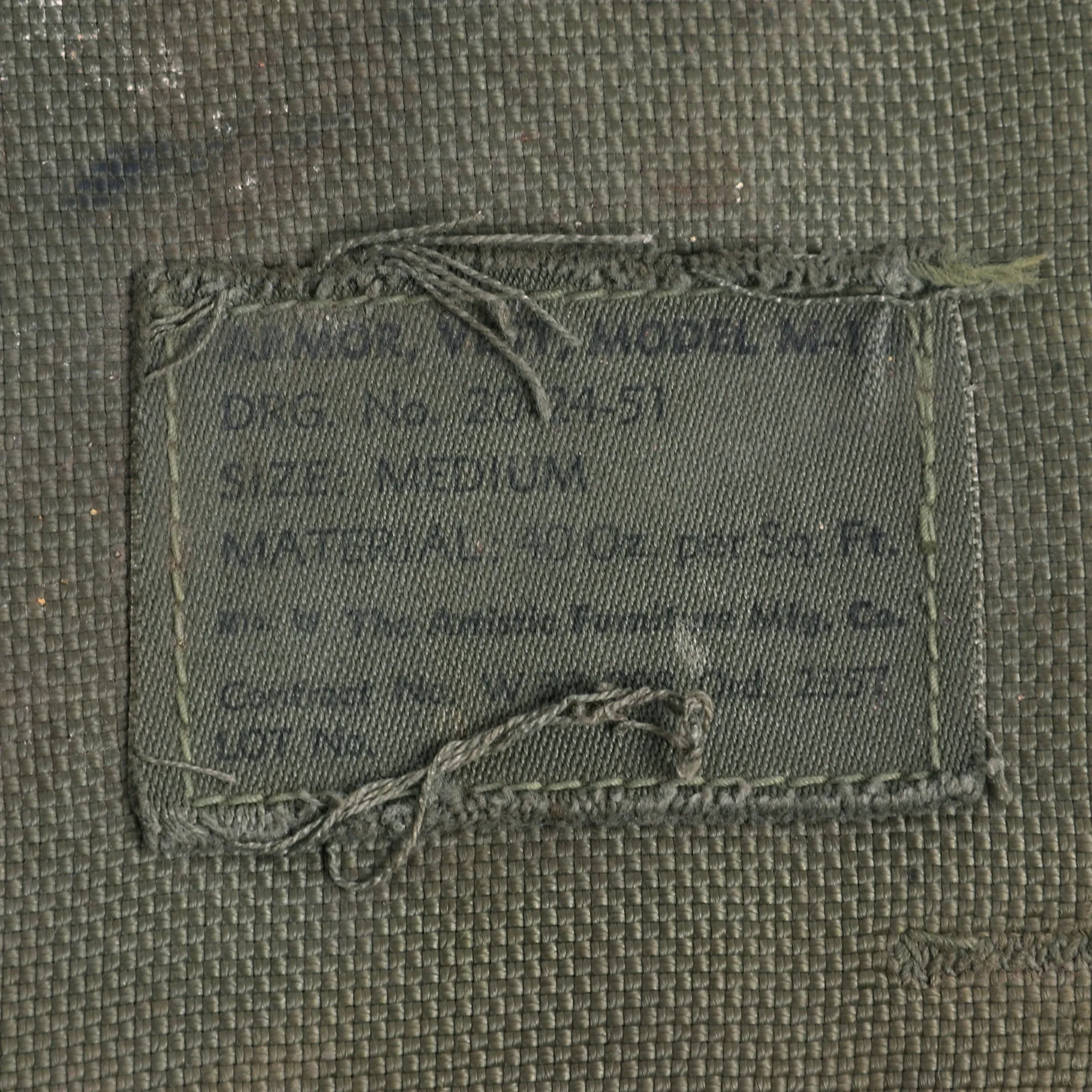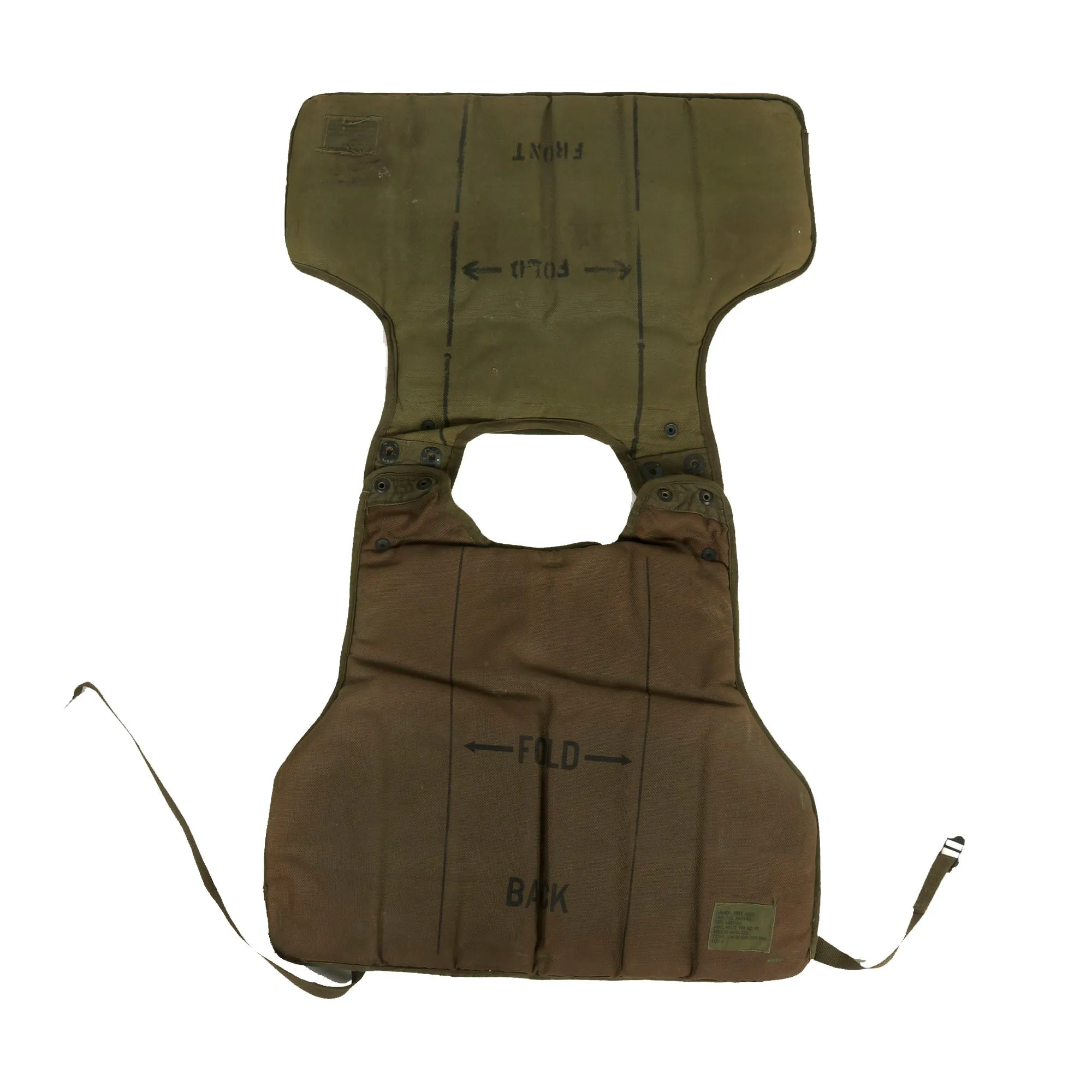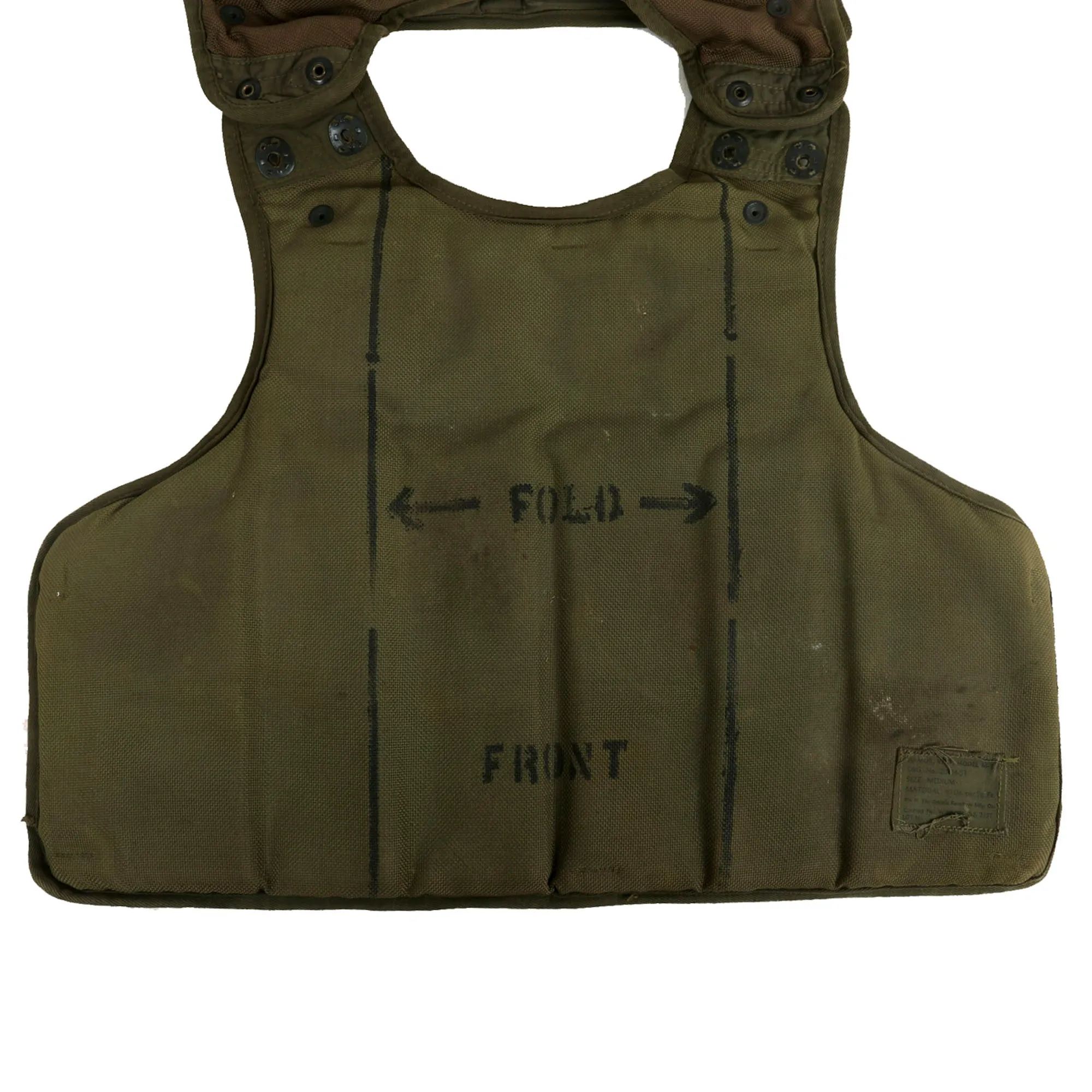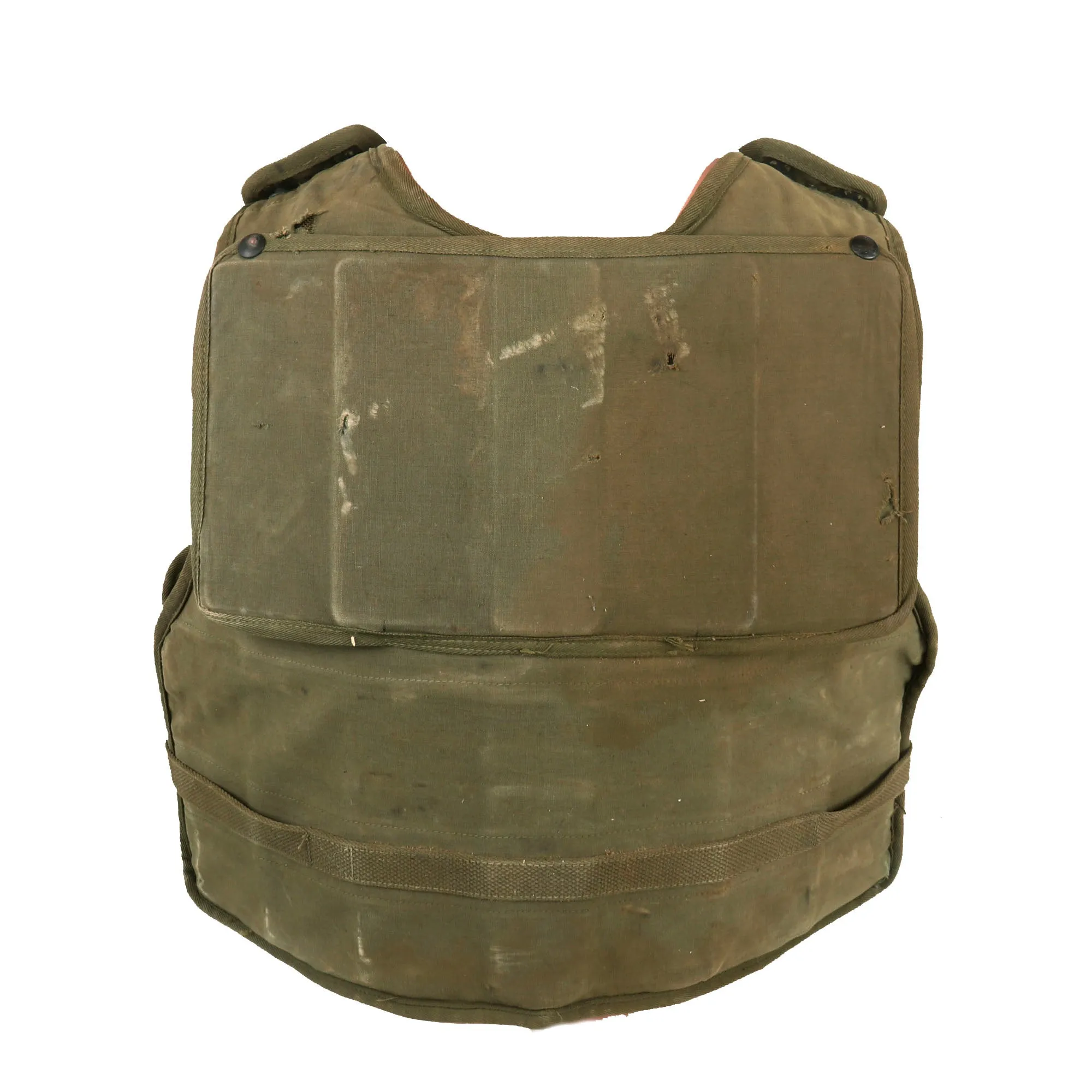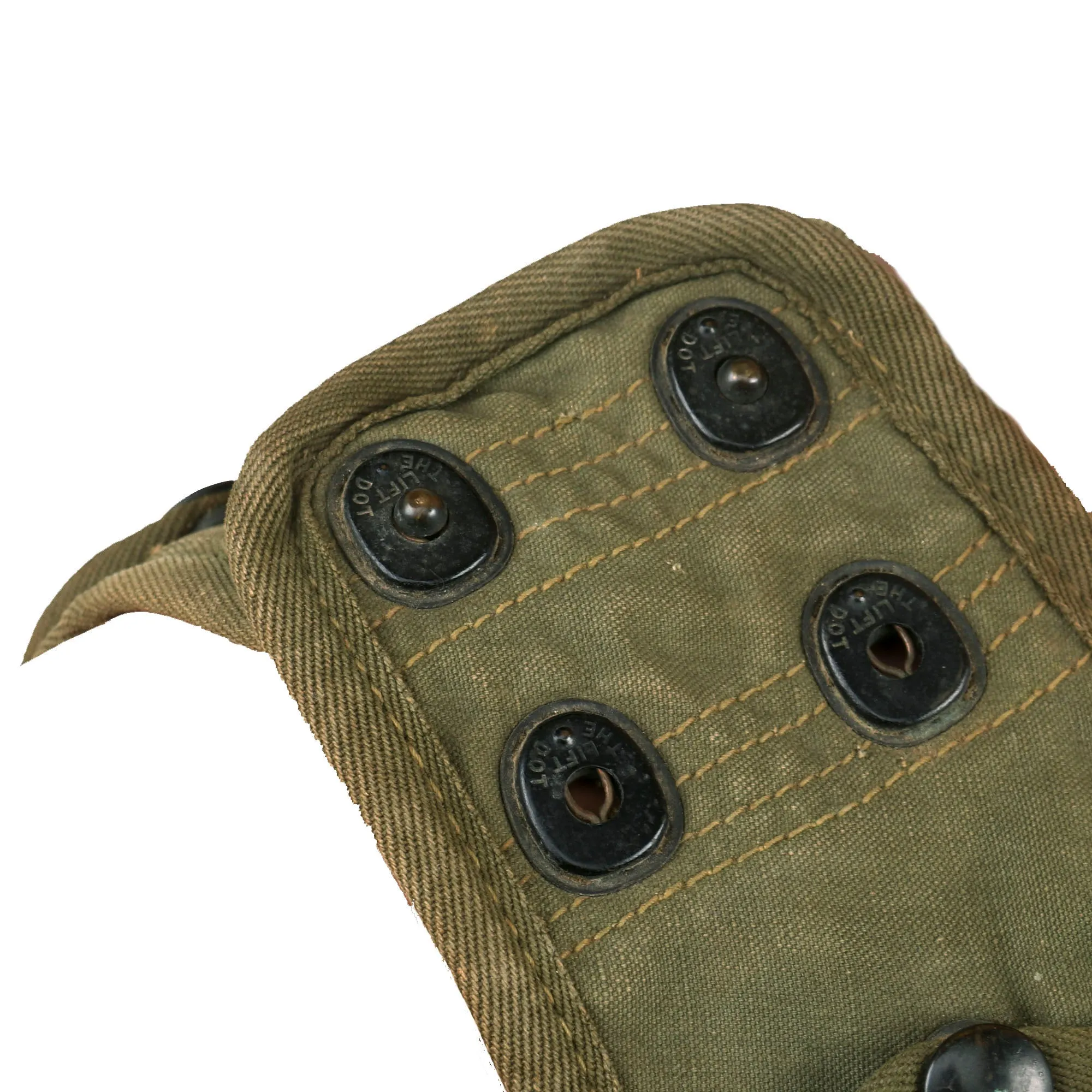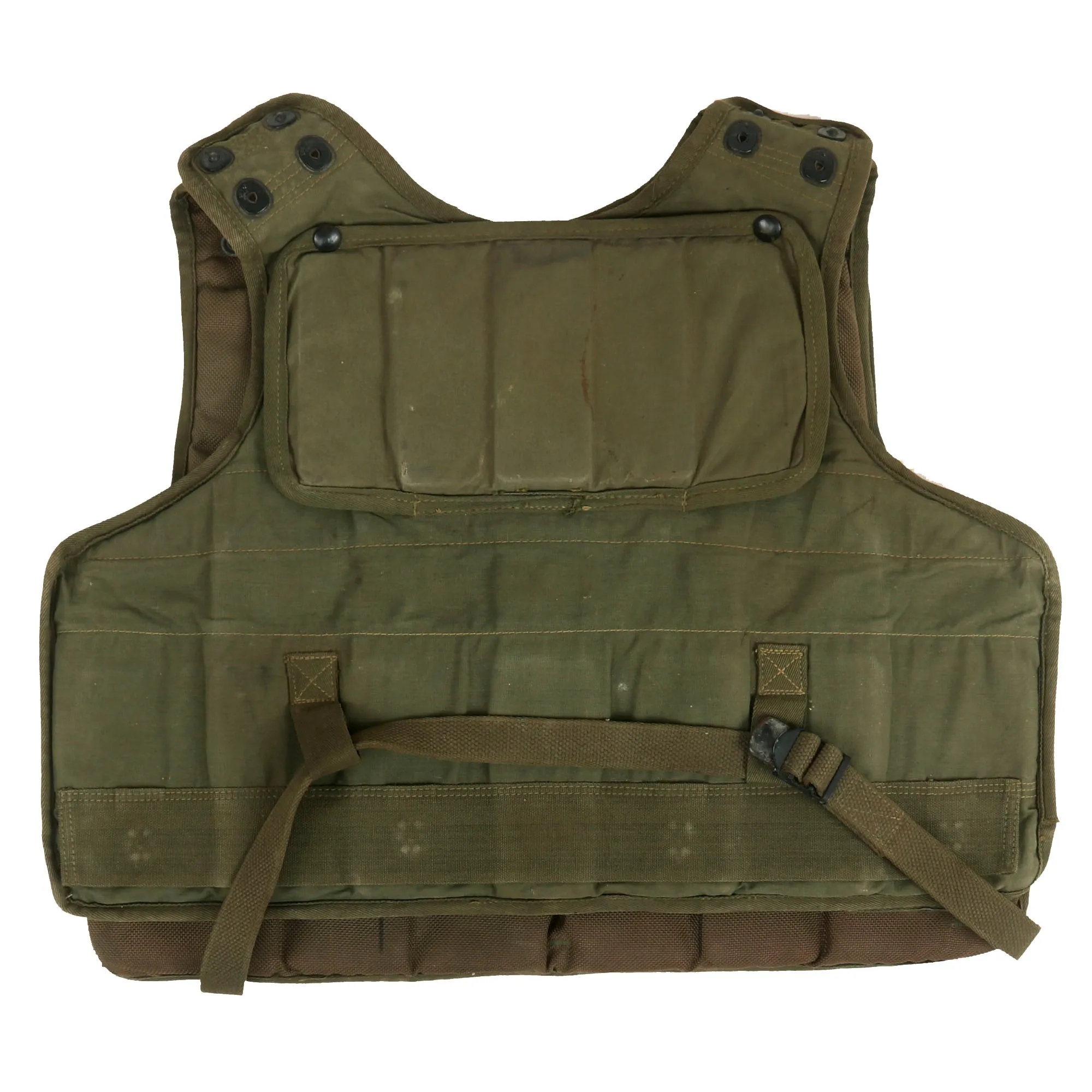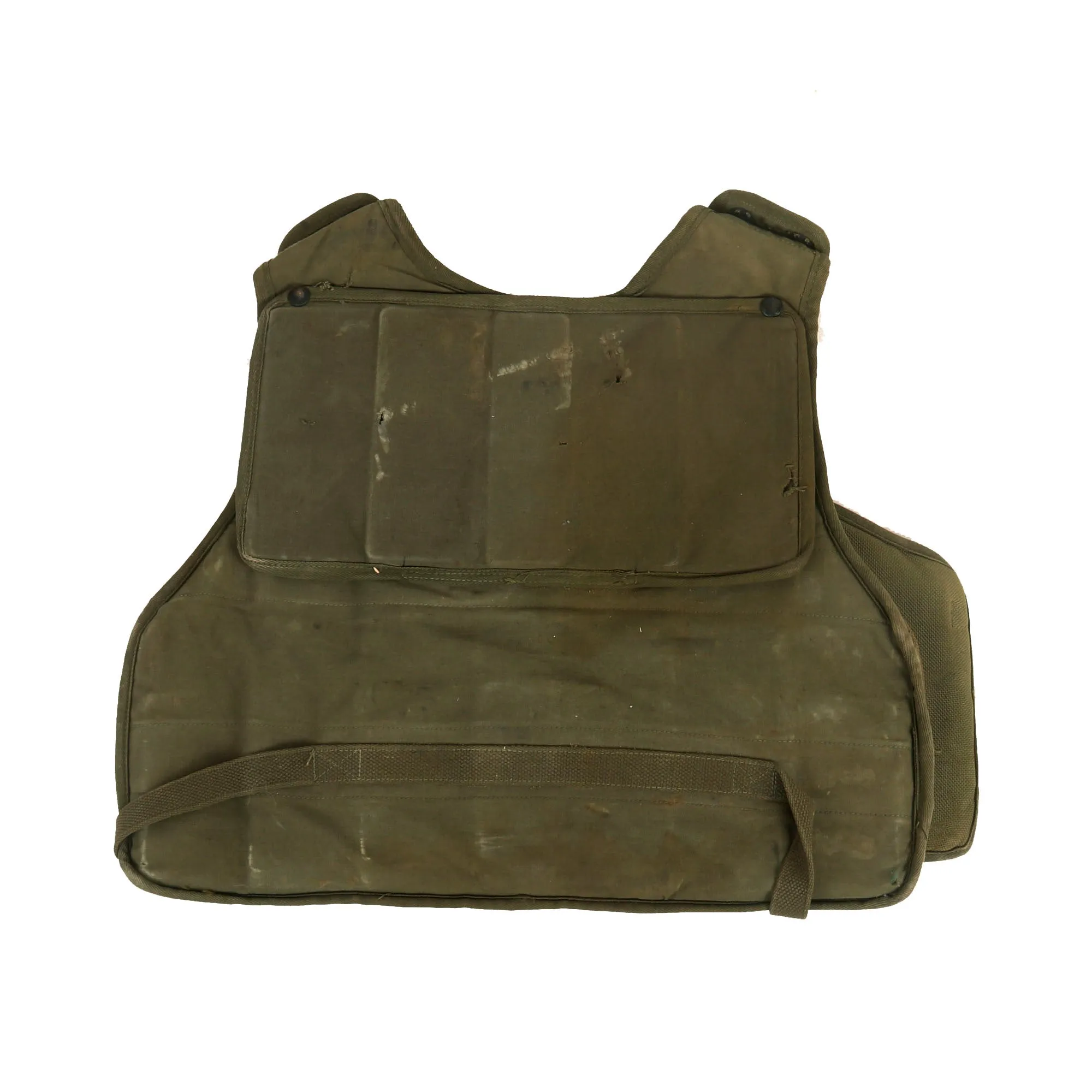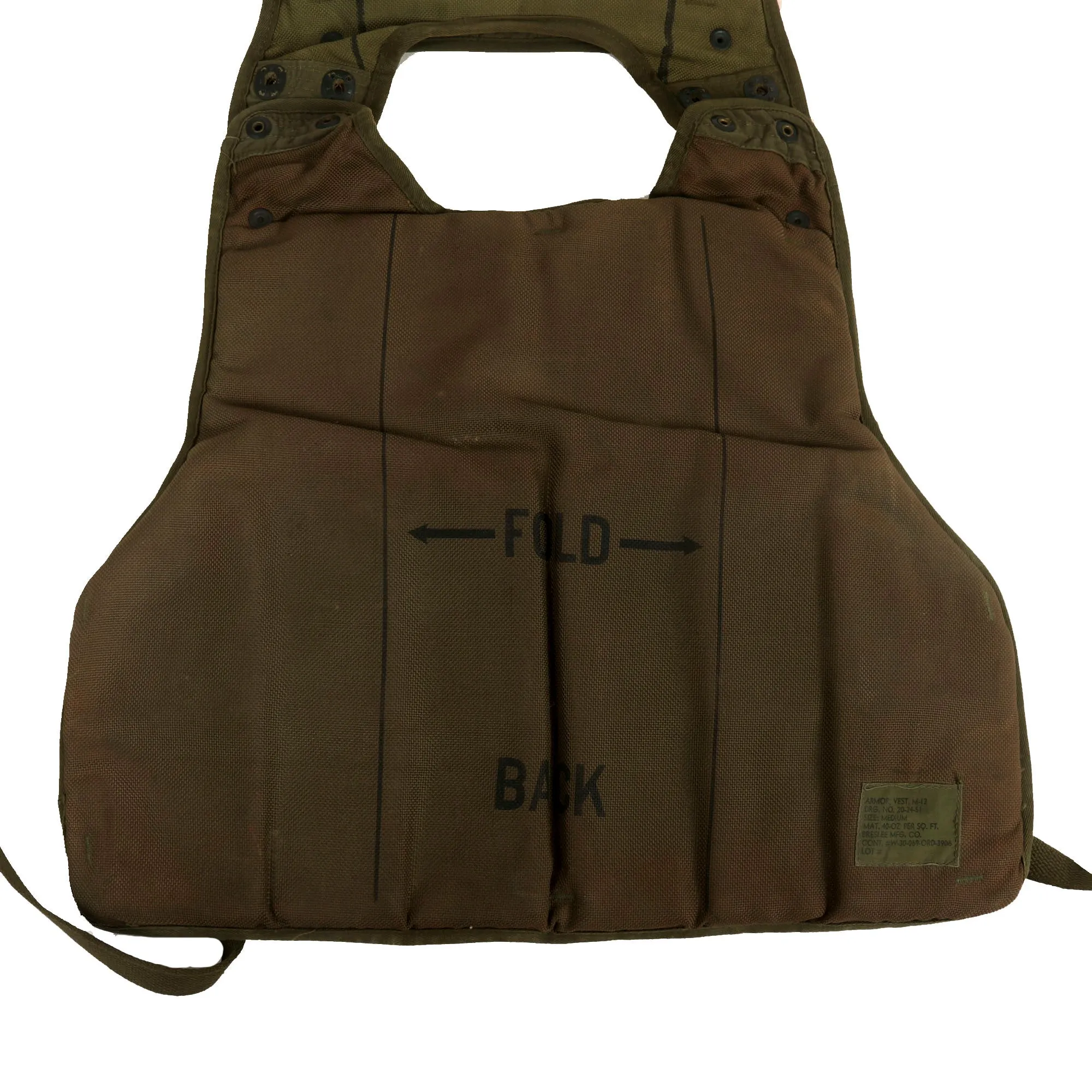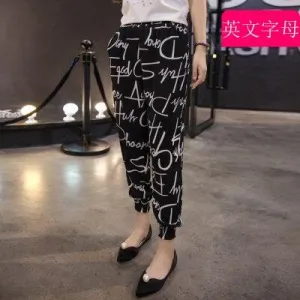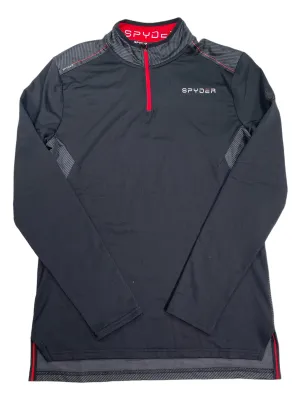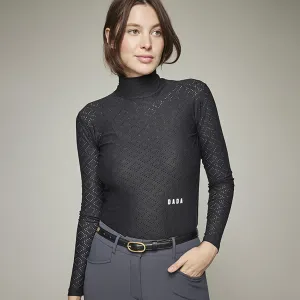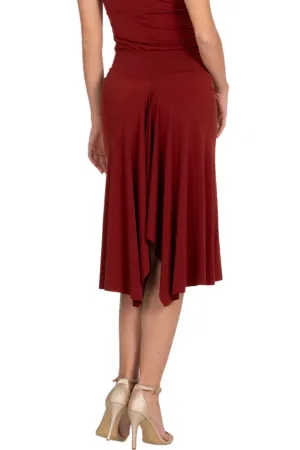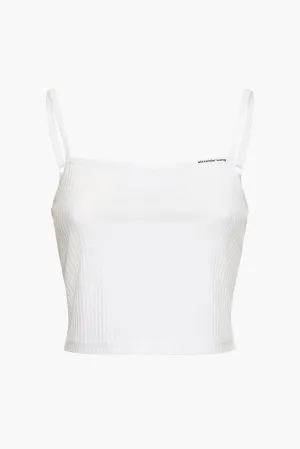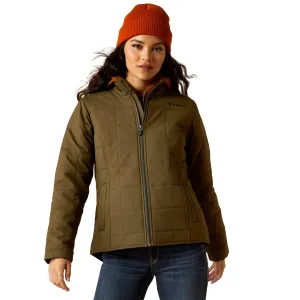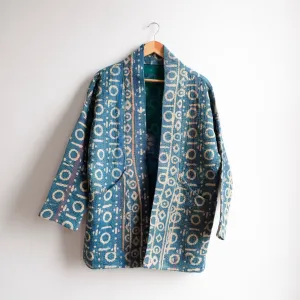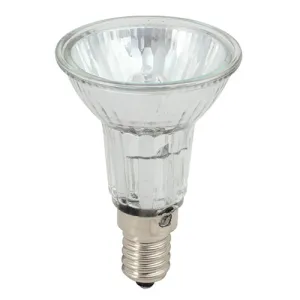Original Item. Only One Available. This is a stellar set of U.S. body armor, the model of which was first introduced in 1944, seeing service during the Korean War before being replaced by different models. This set likely saw service during the Korean War, with the majority of sets being sold to South Korea afterwards.
The M12 Protective Vest consists of 28 overlapping, rectangular aluminum plates, roughly a quarter inch thick. They line the bottom and top of the vest and are backed by several layers of ballistic nylon. The upper plates on the front and back can be unsnapped and folded down to facilitate the use of load bearing equipment and backpacks. The M12 has a single strap around the sides to secure it to the body, but features a quick release system using directional snaps which separates the front and back of the vest at the shoulders should it need to be dropped in a hurry. It is a bit clunky and a bit noisy, but it is not uncomfortable to wear, since the plates are arranged so that they can flex with the body.
This model of armor was the first protective vest that the US issued to ground forces. The armor consists of two pieces, the front and back, visibly labeled as such, and both were manufactured by different companies. The tag on the front piece reads
ARMOR, VEST, MODEL M-12
DRG. No. 20-24-51
SIZE: MEDIUM
MATERIAL: 40 Oz. per Sq. Ft.
The Artistic Furniture Mfg. Co.
Contract No. W33-008 Ord. 2357
Lot No.
The tag on the back piece reads
ARMOR, VEST, M-12
DRG. NO. 29-24-51
SIZE: MEDIUM
MAT. 40-OZ PER SQ. FT.
BRESLEE MFG. CO.
CONT. #W-30-069-ORD-3906
LOT #
The snaps are all maker-marked UNITED CARR. The set is in overall great shape with all pieces retaining, although this set does not have the optional lower groin protector apron. The set measures roughly 21½” x 19½” laid down. The snaps all function well and the strap which secures the armor to the body is still fully intact and in working order. The armor came with a small sign that reads EARLY BODY ARMOR (MID 1950s).
There is an almost unknown series of military documents from World War II (WW2) called “The Reports of the Pacific Warfare Board,” and specifically Pacific Warfare Board (PWB) Report #35 Armor Vest, T62E1 and Armor Vest T64.
This report, like most of the PWB reports, had been classified for decades and only now thanks to the cratering costs USB flash drives and increasing quality of digital cameras has it become possible for the interested collector to access and write about these reports from the formally hard to use National Archives.
PWB #35 is about one of those hugely important but overlooked details — Infantry Body Armor — that utterly undermine the established historical narratives by the professional Military history community about the end of WW2 in the Pacific. Namely that the Japanese would so bloody attacking American invasion forces the Japanese would “win” – for values of winning – a more favorable settlement of the war.
According to PWB #35, both the T62E1 and T64 vest (the latter is offered here and was standardized as the M12 in August 1945) were sent for combat testing to MacArthur’s 6th and 8th Army’s in the Philippines in June and July 1945. The T64 vest was chosen for series production as the M12 in the summer of 1945 with 100,000 supposed to be finished by the end of August. This was sufficient
time to ship those vest to the Pacific for all the assault infantry regiments participating the cancelled by A-bomb invasion of Japan, code named Operation Olympic.
Why infantry body armor like the M12 is so disruptive for the established narratives boils down to one word — casualties. The deployment of 100,000 such vests would have reduced American infantry casualty rates from lethal artillery fragments in the invasion of Japan to roughly Vietnam levels. This means roughly 1/3 fewer combat deaths from artillery fragments and about an overall 10% to 20% reduction in total projected combat deaths. Depending on which of the historical casualty ratios you select for measurement, it means something on the order of up to 10,000 fewer battle deaths, in the event that the A-bomb hadn’t made the invasion superfluous.




